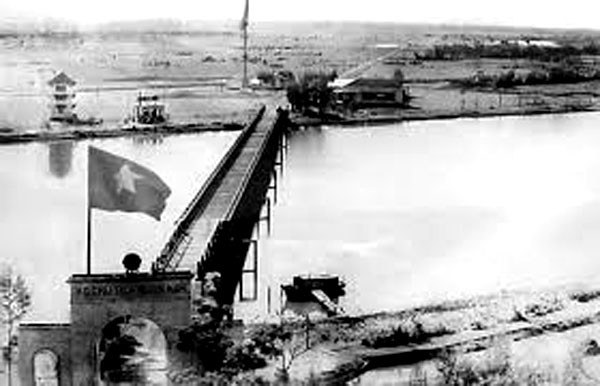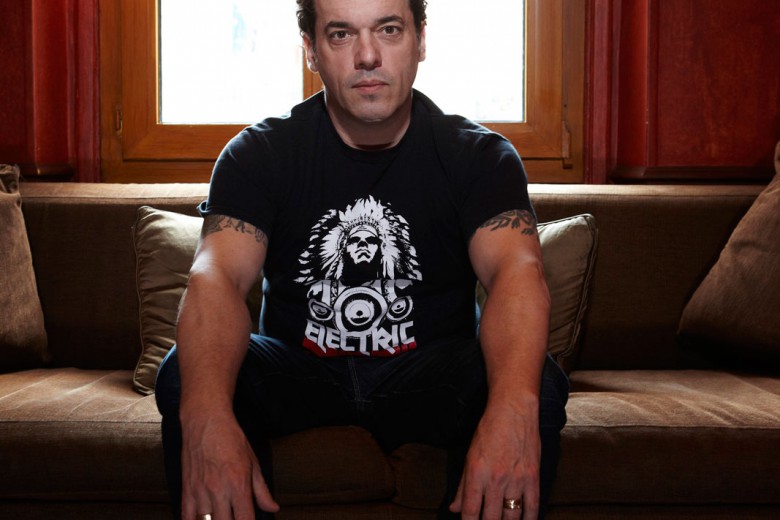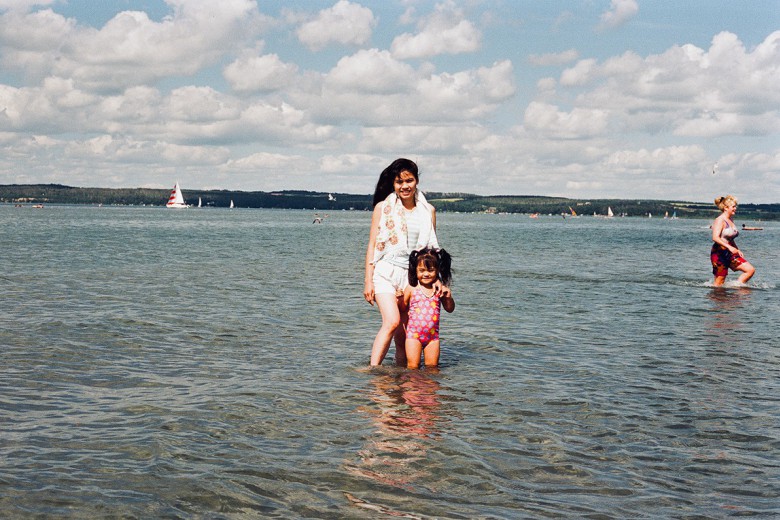
As always, I warned the tourists: “Don’t touch any stray bombs or shells you see on the ground.”
Central Việt Nam’s heavy March rains had kept me home with no work for three weeks, and I’d felt lucky when the German couple phoned to book a tour of the Demilitarized Zone (the DMZ). I’d been in Việt Nam for six years and leading tours to the DMZ for three.
The tourists, in their mid-thirties, were visiting Southeast Asia for the first time. Under a seamless grey sky, my driver and I picked them up at their hotel. They had read in their guidebooks about the DMZ and the possibility of live ordnance, but believed the danger only remained in places not frequented by foreigners.
“For the most part, that’s true,” I said. “The footpaths for tourists at the old battle sites have been de-mined, but make sure you stay on the paths.”
Even now, four decades after the war, people still die or lose limbs when they find live mines and shells in fields and forests. Some travellers to Việt Nam, especially war vets on pilgrimages to the old battlefields, expect to see barbed wire and even more shell casings scattered around than there are; many tourists are surprised that any remain at all.
De-miners, both foreign and local, work long hours sweeping the land with metal detectors and responding to calls from residents who have found possibly live war remnants. They mark the ground, gently dig up cluster bombs, grenades, and fragments, place them in sandbagged pits, and destroy them in controlled explosions. No one, from the government to the various demining organizations, knows how much ordnance still remains in the ground. Some estimate it could take another three hundred years to clear Việt Nam’s land.
Back when I’d first visited the DMZ as a traveller from Canada, long before my tour guide, Trung, became my father-in-law, I’d felt nervous when he motioned us back while he pointed out an old shell. In the following years, I accompanied Trung as a translator for his French and German tourists, helped with his research about the DMZ by translating books and documents into Vietnamese, and continued to learn about the area.
By the time I began to lead tours on my own, I was used to spotting a shell protruding from the ground where I hadn’t seen one before – they sometimes surface after heavy rains and flooding – but I still felt surprised when it happened. I worried that one day a tourist might try to handle one.
I’d worked hard to learn enough to guide tours in Huế and the DMZ: studying, asking questions, and sorting out contradictory interpretations of history I heard from local residents. My fluency in English and a couple of other languages gave me access to documents that my local colleagues didn’t have, and won me tours from travellers hoping for a guide who spoke their language. I sometimes wondered if this was an unfair advantage and worried about taking work from others, but I loved the job and the research. I valued the connection with my husband’s father, and enjoyed guiding tours far more than my previous work teaching English.
During the long drive from Huế, the couple shared the back seat. I sat in front, turned sideways to face them, answering questions about the ten-kilometre-wide swathe of land that once divided Việt Nam into the communist North and non-communist South.
“How can you tell that the ammunitions are live?” asked the woman.
“You can’t always tell. That’s why it’s important not to touch it. It can even look like a rusty muffler or a piece of pipe. Kids sometimes mistake cluster bomblets for balls.”
Cluster bombs were supposed to burst open in the air, releasing dozens to hundreds of bomblets to rain down over a wide expanse. Up to a third of the bomblets dropped during the war hadn’t exploded – yet – and they’ve become more unstable over time.
“Is it true that locals are planting old ammunitions around war sites to sell to tourists?” the woman asked.
“It’s true. Last month, at Cồn Tiên Firebase, a tourist bought some old grenades from a farmer.”
An American friend, a professional de-miner who worked in the DMZ, once said he’d seen teenagers selling unexploded ordnance on the streets, and live rounds were casually displayed in museums. He’d seen experienced colleagues accidentally set off booby-trapped mines that had lain hidden for dozens of years. He’d met scrap collectors who collect everything, even live bombs, to sell the metal casings and explosives. The income feeds their families. He’d met many who had lost limbs, and the families of some who’d lost their lives.
“Why is it called the Demilitarized Zone? It was pelted so much with bombs.” said the woman. “I read that it was a free-fire zone; they could shoot anyone, anytime. The Amerikaner, they dropped thousands of bombs.”
“Yes,” I said. “From ’66 to ’68, bombs fell like rain. But the DMZ and the border were actually formed in ’54, as part of the Geneva Accords to end the previous war, the war with the French. The border was supposed to be temporary, to allow French forces to withdraw from the north and the Việt Minh to retreat from the south.”
The couple wanted to know more about the accords and see the Hiền Lương Bridge, which crosses the Bến Hải River and the old border. The husband pointed at their guidebook. “Look,” he said to his wife, “die Brücke, the bridge, the north half was painted red. The south half was yellow. It says there are still huge propaganda loudspeakers.”
“These loudspeakers, they are still used?” the woman asked me.
“Not now, but they used to boom out propaganda and counter-propaganda from both sides of the river.”
At Dốc Miếu, in Quảng Trị province, where the last American base on the south side of the border once stood, we stepped out of the car. Blue patches had broken through the clouds. The husband asked about the McNamara Line, an electronic barrier that had linked Dốc Miếu, once a communications hub, and several other American bases with sensors and mines intended to prevent northern Vietnamese forces from moving south.
The woman pointed at a chunk of metal near the roadside. “Scheisse, what a huge shell!” She backed away. “It’s just lying there!”
Her husband photographed it before we scrambled up the red earth embankment. The land, once barren, was green with foliage. Little remained of the base. Vegetation obscured a rusting American tank. Chiselled words on a cement block, barely legible, assured us we were in the right place: Dốc Miếu.
“Imagine this place crawling with soldiers,” said the man.
“And the earth shaking from bombs,” the woman answered. “It’s eerie.”
I’d often had these same thoughts. Quảng Trị had taken the heaviest bombing in all Việt Nam.
In a sense, it still isn’t over. Although fewer incidents occur each year, explosive remnants have killed or injured more than 7,000 people in the province since the war’s end. The count for the whole country is already over 100,000. A third of the victims are children.
The couple turned to take photos of the land beyond the hill, dotted with palm trees against a hazy backdrop of distant mountains. I said I’d wait for them by the road and slid down the embankment, stopping with my toes almost touching the two-foot-long shell the woman had pointed out. My driver leaned against the car, lighting a cigarette. In that moment, I’m not sure what happened. I wasn’t thinking.
I scooped up the heavy shell in both hands.
In the seconds I held it, I felt its weight across my palms, the muscles in my arms tensing to support it. I smelled damp earth – the shell’s underside was gritty with it. My driver stared, his lips a straight line. Trung’s warnings flooded into my head – the same warnings I’d given the tourists. Don’t ever touch ammunition.
I eased the shell back onto the ground, walked to the car and slid into my seat to a barrage of Vietnamese: “Trời ơi! Em bị điên hả?” (Heavens! Are you crazy?) He blew out a lungful of smoke.
“I’m sure scrap collectors and de-miners have cleared all the live stuff in the obvious places. It’s in the bush that we have to be careful.” As I spoke, I realized my false confidence came from watching farmers carelessly scoop up war remnants. I’d slipped into the mistaken belief that anything in plain sight had been planted, even though I knew dangerous things surface after floods, and munitions still underground sometimes randomly explode, destroying houses built on top of them by unsuspecting families.
As we drove away, my driver muttered: “You’re lucky to be alive.” I pictured myself being blown to smithereens while he and the tourists looked on in horror. My face grew hot; I looked out the window, glad the couple couldn’t understand Vietnamese.
We arrived at Cồn Tiên and tramped between rows of rubber trees towards a crumbling bunker. I managed to put the incident out of my mind. The woman photographed her husband looking out through the bunker’s firing slit, like so many tourists do.
Their cameras clicked as we walked amongst identical headstones of unknown soldiers at Trường Sơn Cemetery, and visited the bridge at the old North–South border. Before returning to Huế, we descended into the Vịnh Mốc tunnels, where a few hundred villagers lived underground during the years of bombing. I pointed out the hole where the only bomb that struck the tunnels came through but didn’t detonate. The thought of the bombshell exploding at Dốc Miếu flashed through my mind again.
The couple stepped out through an exit and sat on the beach. I lingered inside briefly, leaning against the cool earth, to clear my head. What if the couple had been injured by shrapnel? I was responsible for their safety. Instead I’d endangered them. Stupid, stupid, stupid.
In the car on the way back to Huế, they hunched over their cameras, looking at photos. I looked out the window. What kind of trouble would my Vietnamese in-laws face if that bomb had exploded? Especially Trung, from whom I’d learned so much about the DMZ. He’d sent his best driver with me.
A local guide, I thought, would never have picked up that shell. Then again, I’d seen guides pick up shells planted by farmers; sometimes, the farmer himself stood nearby. But you can’t always tell live rounds from spent ones. That was why Trung pointed at them and kept his distance. One careless instant could have cost me everything.
If I could make such a mistake, if even scrap collectors and farmers make mistakes, what about the kids living around the DMZ? Despite mine awareness programs and posters in schools, I still often saw reports of children tampering or playing with live remnants. Sometimes they didn’t know what it was. Sometimes they thought they could make a little money selling it.
People in Quảng Trị have to live with this every day. People make mistakes all the time. But that didn’t excuse my lapse in attention or explain why I’d scooped up the shell, about to say, “Look at this!”
Sometimes things happen for no reason at all. My rash act was about as senseless as the war that left all this shrapnel in the first place. I thought about it every time I returned to the DMZ. Even though I’d grown used to shells poking out from under bushes and on display at some war sites, they still amazed me – what they were, how they got there, the history they represented. The bombshell disappeared at some point, but whenever I went to Dốc Miếu, I could almost see its ghostly outline on the red earth, warning me of the still lurking danger.
The way war never really leaves a place once it’s been there.






